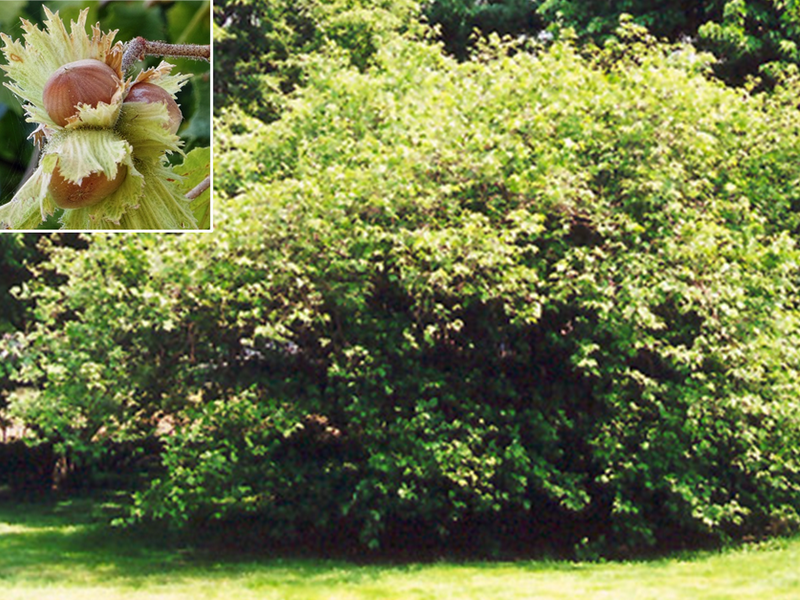American Hazelnut
Corylus americana
Click here to download a PDF of this plant information page (for printing).

Sun Exposure: Full Sun, Pt Sun, Shade
Season of Interest: Summer, Fall
Bloom Time: March - April
Bloom Color: Yellow catkins
Height: 5 to 7 ft.
Spread: 8 to 12 ft.
Spacing: 15 ft.
Water Needs: Average
Maintenance: Prune suckers
Soil Type: Loam, Sandy, Clay
Soil pH: Acidic (pH < 6.0)
Soil Drainage: Well drained
Pests: Japanese beetles
Diseases: Leaf spot, Crown gall
Wildlife: Bees, Buterflies, Birds, Small mamals

Description:
The American hazelnut tree is a great source for the delicious hazelnuts we all enjoy. Delicious treats are not the only reason people plant these trees, though. They play an important functional role in creating hedgerows and formal gardens since it can easily be pruned to the desired shape. These attractive flowering hedges become valuable food sources for birds and small mammals, making your landscape into a miniature wildlife reserve. The hazelnut tree is also highly valued for its aesthetic value; the interesting flowers are a conversation piece that draws the eye, but the real highlight comes from the twisting branches. For more information see:
plants.ces.ncsu.edu/plants/corylus-americana
Care and Growing Tips:
The hazelnut tree is a relatively carefree plant. One important thing to note is that depending on your intended use, you will need to invest in at least two trees since they are monoecious (do not self pollinate). Placing a hazelnut tree in a location that receives full sun most of the day will give you the best yield of flowers and nuts if that is what you are trying to achieve. It will tolerate part shade as well, but you will see a decrease in flower production.
The hazelnut tree is very adaptable to virtually any soil condition. Keeping your hazelnut tree watered is important to ensure profuse flower and nut production. It will not tolerate extreme drought well and will need supplemental watering to remain to produce nuts during dry conditions. Water it using the same standard rule to establish 10 gallons per inch of trunk diameter after planting. Using this method will keep your hazel green and blossoming in even the driest of weather.
For the best blooms and fruit production, give your tree an application of organic slow-release fruiting tree fertilizer in the fall. The primary upkeep task for a hazelnut tree involves cutting away the suckers. You may want to let them grow if you are using your hazel for attracting wildlife and birds. The sucker growth will create a thicket and give shelter and a habit to the critters and feathered friends when they need it. When pruning, be careful not to confuse suckers with lateral branches. Don't remove any branches that shield the trunk from sun exposure, or you will end up with even more prolific suckering.